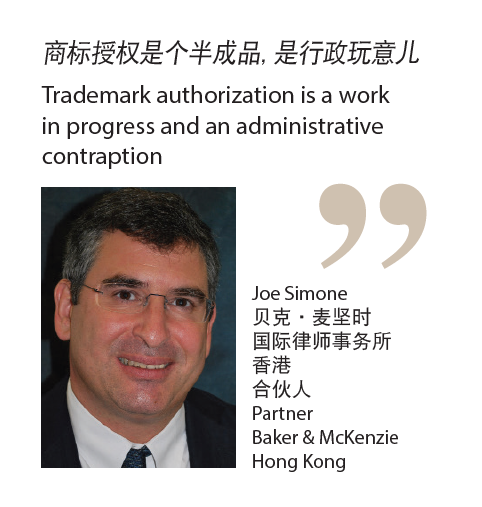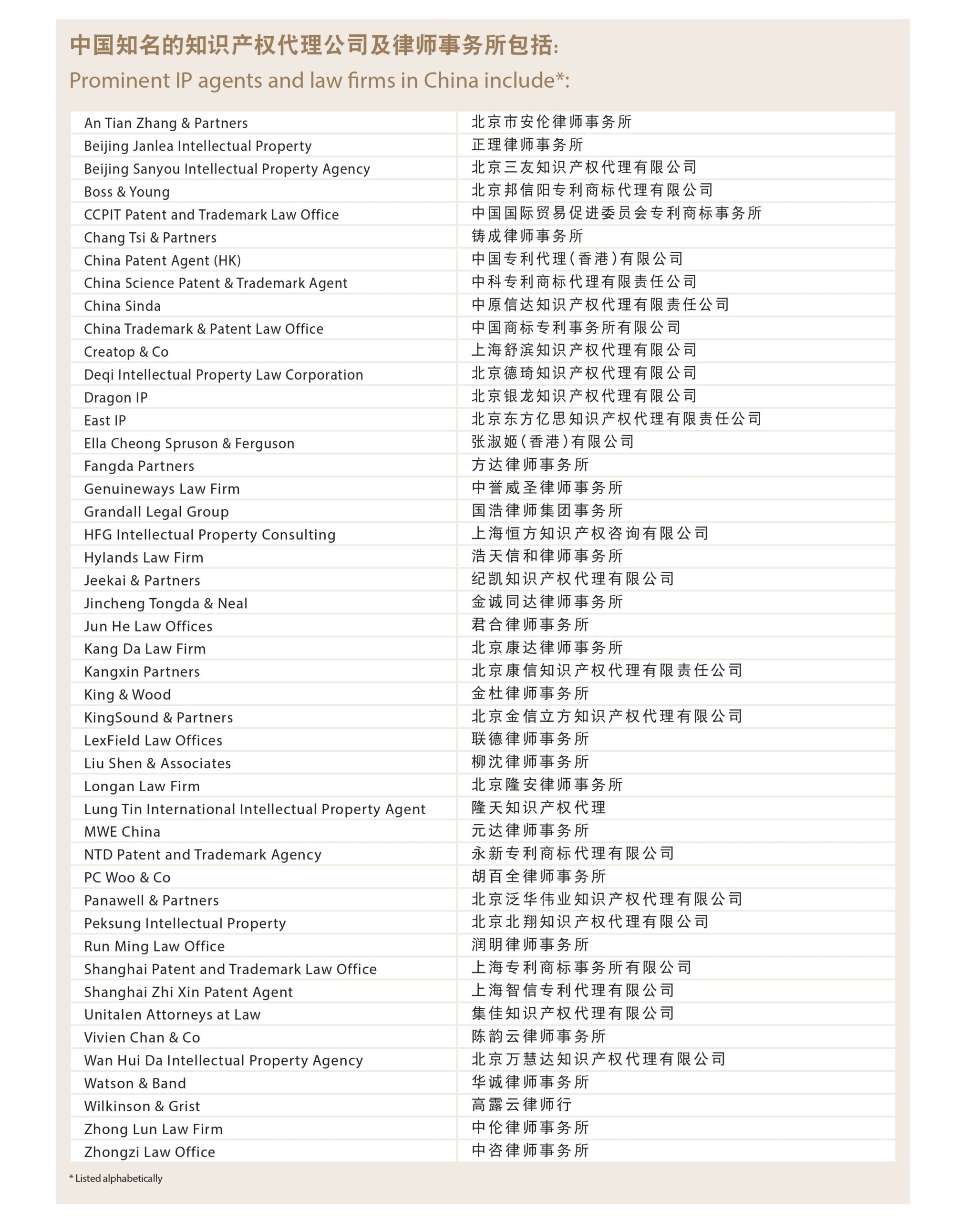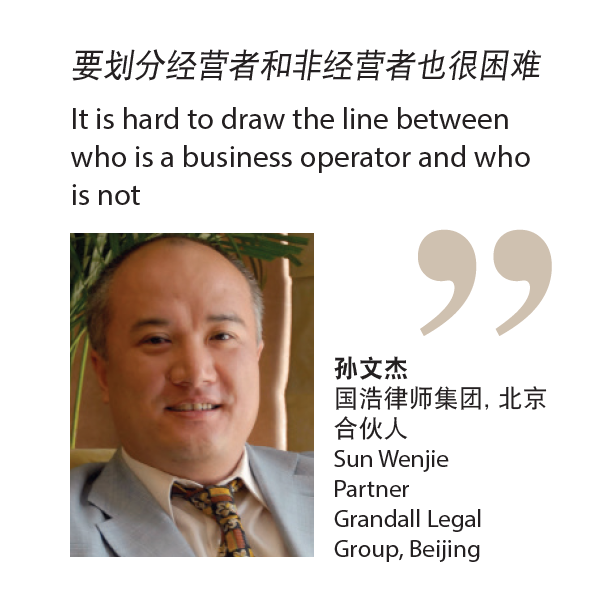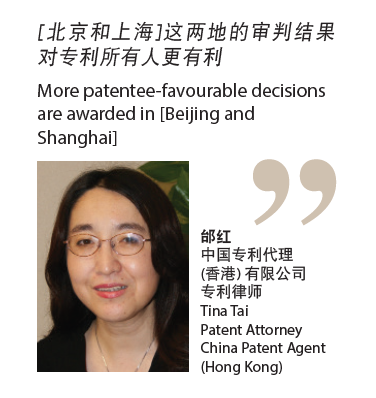Intellectual property owners are turning away from China’s administrations for industry and commerce and towards the court system for protection. Meanwhile, the daily battle against counterfeiters continues. By Colin Galloway.
China’s accession to the World Trade Organization in 2001 raised hopes among IP rights holders that Beijing might finally get tough with China’s army of pirates and counterfeiters. Today, almost nine years later, they’re still waiting. Despite the creation of a system of IP rights protection that is in many ways as sophisticated as any in the world (see box, Proposed changes to the PRC Trade Mark Law on page 32), and the harnessing of legions of officials and police to crack the whip on the ground, observers say Beijing has failed to make any serious dent in the problem. With infringement becoming increasingly sophisticated, specialized and systematic, piracy and counterfeiting has apparently gone viral.
The latest US government statistics show that China is far and away the world’s biggest culprit in the counterfeiting game. According to the Department of Homeland Security, some 89% of IP-infringing goods seized at US ports in the year to October 2009 originated from China and Hong Kong. While in absolute terms, the US$231 million-worth of seized Chinese fakes was down 4% on the previous year, the fact that total imports suffered a 25% drop means that the proportion of infringing goods has continued to rise. Most of these products originate from factories in China’s south east, with the manufacturing epicentre located in Guangdong province.
This said, however, the situation on the ground is not one of unrelieved gloom. In fact, lawyers involved in IP protection in China report that individual rights holders today enjoy far better protection than they did in the past. Owners are able to pursue infringers effectively via both criminal and civil action, shut down manufacturing lines, and obtain damages through the courts at levels that (sometimes, at least) can act as a significant deterrent. As ever, though, the landscape remains opaque and continues to shift rapidly.
AICs fall out of favour
The first recent trend that stands out is an apparently alarming decline in the enforcement statistics. Figures released by Beijing show the number of cases handled by the Chinese police in the first three quarters of 2009 increased by about 25% year-on-year (to 1,468 cases). The number of prosecutions against infringers over the same period actually fell by 43% (to 909 cases). According to Joe Simone, a partner at Baker & McKenzie in Hong Kong, the cause of this decline was the impact of internal policy directives resulting from the global economic crisis. “When you took factory investigations to the police they would sometimes say no because they didn’t want to create job losses by shutting factories – it was a pretty constant refrain,” says Simone.
The second evident trend is that rights holders have become increasingly disillusioned with the services offered by the local Administrations for Industry and Commerce (AICs). The AICs have traditionally offered a cheap and relatively painless avenue for raiding factories that produce counterfeit goods, and the vast majority of Chinese enforcement actions are still pursued via this avenue. In truth, though, the effectiveness of these raids is questionable. The number of AIC cases transferred for criminal prosecution (just 140 out of several tens of thousands in the first 11 months of 2009) is minuscule. And with AIC fines proving equally ineffective as a deterrent, Simone says that many are avoiding the AICs altogether: “They’ll bring cases to the police, they’ll send warning letters, they’ll bring civil actions, but they’re generally avoiding the AIC because they feel it’s a big machine.”
With the AICs out of favour, and the police remaining short on both manpower and motivation (except in pursuing the biggest cases), many rights holders are turning to China’s civil court system to pick up the slack. According to Philip Yip, senior patent attorney at Johnson & Johnson in Shanghai, IP enforcement “is becoming a little easier in the courts”.
There was a 23% increase in IP civil actions in the first half of 2009, to some 13,700 cases. According to Clifford Borg-Marks, of counsel at Hogan Lovells in Beijing, “courts are more credible than they used to be, and these days you stand a better chance of getting damages”.
Courts award more damages
The recent rise in the level of damages awarded by Chinese courts for IP infringement has been a prime reason for the shift in sentiment. According to Simone, “the national government has told local courts to be more generous [in awarding damages] because it’s the only way things will change – it’s something that has to be experimented with because nothing else is working very well.” Specifically, Supreme People’s Court vice-president Cao Jianming stated in a 2008 speech that the courts had been ordered to assess damages according to a “full compensation principle”, rather than requiring strict proof of losses suffered, as they did in the past.

Amounts of compensation vary widely according to locale. Nonetheless, the increasing sums involved mean not only that damages are slowly becoming a significant deterrent to infringement, but also that rights owners are now anticipating the day when infringements can be pursued on a self-funding basis. This has long been a holy grail for rights holders in China, who have until now had to pay most or all their legal bills whether they won or not. Although by international standards, the costs of IP enforcement in China are not especially high, they can still be substantial. While charges vary widely according to the complexity of the case, interviewees cited prices for a basic AIC investigation of between US$3,000 and US$5,000. Litigation costs substantially more. One international law firm estimated the price of a typical trade mark or copyright action (first instance only) at between US$20,000 and US$60,000. Chinese law firms may generally be cheaper, coming in at perhaps half that price. But in all cases, investigator costs (which can be substantial) will be extra.
Judges learn about IP
Another reason why the civil court system is becoming more popular is that, by and large, judges hearing IP cases are today far better informed about IP law than in the past. This is the result of a longstanding effort by Beijing to establish a network of specialist IP tribunals across the country. Most practitioners advise foreign companies to bring their cases in these forums whenever possible, as they generally offer objective and reasoned judgments. According to Tina Tai, a patent attorney with China Patent Agent in Hong Kong, rights holders should always go to the big cities. Beijing and Shanghai may be the best places. “After collecting statistics from about 500 patent litigation cases in China, we see that more patentee-favourable decisions are awarded in these [two] locations,” says Tai.
Forum shopping can be tricky, however, especially when infringers are based in out-of-the-way locations. “Rights owners can only shift jurisdiction to the big cities if they can show some infringing activity there”, says Heather Lin, lawyer and vice-president at NTD Patent and Trademark Agency in Beijing. “That can take some skill, but you can do it by showing, for example, that a manufacturer has a branch or agent in the city that is selling the product.”
Those unable to choose their forum, and even those who need to try to enforce a judgment granted by a court elsewhere, face sometimes considerable problems of local protectionism and even court corruption. “Choice of counsel and managing local counsel is one of our raison d’etre here,” commented a lawyer at a large foreign firm, who describes hiring a former judge to represent a client in one provincial city. “Though he may not be the best lawyer, he has face with the other judges. That means he’s not going to pay anyone off, and at the same time the other judges would be reluctant to screw him over,” said the lawyer.
Court action can have other downsides, too. For one, it might generate unwanted publicity. The spectacle of a large foreign company pursuing a local counterfeiter can be perceived negatively by China’s vociferous blogging community or by local press, and the unfavourable feedback can be just as damaging as the counterfeiting itself.

According to Ross Parsonage, a solicitor with Rouse in Beijing, litigants can significantly reduce costs if they establish internal administrative systems that create a paper trail. “A lot of companies are paperless and don’t collect or preserve evidence in the form the courts require,” he says. Companies should therefore be careful “to preserve evidence of first use, for example, by notarizing it or keeping receipts. Or, if they are designing new packaging, clear records should be kept of that process, which is all part of showing how you came up with the design and how it’s unique”.
Problems with evidence extend also to post-judgment enforcement. On the one hand, courts are often reluctant to compel infringers to preserve or surrender relevant evidence. On the other, they are equally reluctant to grant orders for seizure without that evidence. As Rouse’s Parsonage says: “In order to get information about bank accounts or property, the investigations can get murky. No one wants to go down the road of paying people to get that information, but it is common practice to use investigators when it is not readily available, so we’re putting more pressure on the courts to use their legal powers to do it instead.”
Internet infringement takes off
As if IP owners’ problems with infringements in China weren’t bad enough already, the emergence of the internet as a major new distribution channel for Chinese-made fakes is only adding to their pain. The introduction of a convenient online payment system (Alipay) on local electronic trading platform Taobao (a Chinese competitor to eBay) has seen e-commerce sales in China explode from less than RMB50 billion in 2007 to an expected RMB400 billion in 2010 (and almost RMB900 billion in 2012), according to investment bank Credit Suisse. A vast amount of this commerce involves fake goods, much of which are headed abroad. Chinese customs seized some 37,000 mail and express mail packages between June and December 2009, more than seven times the figure from the same period the previous year. This has caused the phenomenon of what one lawyer dubbed the ‘half-million club’ – businesses which complain of at least half a million listings of counterfeit items on Taobao’s site.
How are companies dealing with this onslaught? According to Simone, “up to about a year and half ago, no one wanted to deal with it as they thought they were wasting their time. Then some of our bigger clients started trying and they did find some of the online companies cooperative to a degree.” Simone claims now to have the cooperation of 15 or 20 of these trade platforms in taking down offending listings. However, he says, there is still a 70% recidivism rate, “so there’s a need for more preventative measures than just constant takedowns”.
According to Wang Yadong, a partner at Run Ming Law Office in Beijing, the intangible nature of online retailing raises a range of new problems for rights owners because “internet counterfeiting is normally non-representational and virtual, the place of infringement is uncertain, and the collection of evidence is difficult”. Wang says these unique features “lead to problems in proceedings [and in] the investigation of some cases, for instance, trade mark infringement by internet search engine operators”.
Henry He, of the legal resources department of skincare product marketing company Mary Kay in Shanghai, singles out unauthorized internet sales as one of his company’s most pressing infringement issues. “We send ‘cease and desist’ letters to internet platform providers such as Taobao asking them to remove infringing materials,” says He, but “the difficulty is that platform providers are not obliged proactively to check and filter IP-infringing activities unless they are informed [and supplied] with supporting documents.” As a result, “we need to continuously monitor the same internet sites and pages”. While China has so far been slow to adopt legislation aimed specifically at addressing the problem of internet-based infringement, at least three new legal developments are now in the pipeline (see New laws to fight internet infringement on page 23).
In the end, however, deterring internet infringement will probably require the intervention of the police. As Simone observes: the biggest problem will probably remain the individual who sits with his computer in an internet café with nothing but an IP address and his domain, his internet address and his entire business on an offshore server. “The police tell us they can find these people using the payment systems and email addresses, but ultimately they will have to help with those issues because you can’t go to a court in China and say you want a disclosure order – it just doesn’t work that way,” says Simone.
LawTechnical standards plan should scare patent holders
Draft regulations issued in November 2009 by the PRC Standardization Administration seek to govern the relationship between patent rights and national technical standards. The Administration of Formulating and Revising National Standards Including Patents Draft Regulations (Draft) state, among other things, that patent owners who are interested in developing a national standard, or are otherwise aware that a standard under development relates to a patent they hold, would be obliged to disclose their patent(s) to the relevant technical committee.
Owners who failed to do so would be obliged to grant a royalty-free license for the use of the patent in connection with the national standard. The draft regulations also provide that owners of patents relevant to national standards would be asked to grant either a royalty-free license or a license for which the royalty fees are “significantly lower” than market rates. According to Richard Bird, a senior associate at Freshfields Bruckhaus Deringer, the draft regulations are far more onerous than those typically set by international standards-setting committees. They should, clearly, be of concern to all patent holders. The consultation period on the substance of the Regulations closed on 30 November last year.
Retail battles commence
Counterfeiting at the retail level has turned into a running battle for brand owners in China, and there is little evidence to suggest they’re winning. There has been some progress in the legal arena, however, that suggests some reason for optimism about enforcement in future. First is the new “trade mark authorization system” (TAS), first mentioned in the latest Action Plan for IPR Protection issued by the Inter-Agency Joint Meeting for Implementation of the National IP Strategy in April 2009. While national TAS regulations have yet to be introduced, such rules have reportedly been applied on an ad hoc basis in a number of major cities. The rules require landlords to monitor brands sold by their tenants, register those brands in a database, and gather evidence that tenants are authorized to sell them or otherwise prove the source of the goods.

More progress has been made, however, in widening the scope of action available against landlords. International brand owners are continuing to push ahead in the saga of Beijing’s notorious Silk Market. Having already established that retailers’ landlords have an obligation to act to prevent infringement, a further decision in January by the Beijing No 2 Intermediate People’s Court has now established a new duty of care relating to retail landlords. This creates a “should have known” standard going beyond the previously articulated “actual knowledge” standard, and imposes a duty to take preventative measures, rather than simply stopping infringements when they are noticed. This decision is now subject to an appeal by the defendants to the Beijing Higher People’s Court, with a decision expected later this year.
The Silk Market case may also create a precedent for instituting criminal action against retailers’ landlords. A former general manager of the market, Wang Zili, has already been arrested for accepting payoffs from counterfeiters. In the criminal proceedings under way in that case, the court has also been asked to hold the Silk Market criminally liable (as a corporate infringer) for accepting rents from retailers who were known by senior management to be selling fakes. The prospect of criminal liability for both managers and companies involved in renting retail space to those selling counterfeit goods should be a powerful incentive for them to prevent infringing activity in their properties.
In the end, it is the focus on improving access to criminal remedies that is seen as the key to more effective enforcement of IP rights in China. In part, this can be achieved by simply lowering the bar for criminal liability thresholds – something rights holders have been demanding for years. But criminal law resources can also be leveraged in a number of less obvious ways. Borg-Marks feels that the police should have the power to issue fines and confiscate goods on the spot, no matter what quantity is involved. “They’re allowed to do that for other types of illegal act, but they can’t do it in IP cases,” he observes. Police resources could also be better used. According to Simone, the police need to focus their resources more effectively. “What they should do is sit down with a policeman and give him a quota of a certain number of cases per month. That creates a critical mass, especially in the hotspot places like Guangzhou and Shenzhen, where they need police sitting there developing leads over time.”
Proposed Changes to the PRC Trade Mark Law
The National People’s Congress is expected to introduce amendments to the PRC Trade Mark Law in early 2011. China Business Law Journal asked IP lawyers in China for their take on the most important proposed amendments to the law. According to Richard Bird, a senior associate at Freshfields Bruckhaus Deringer in Hong Kong, the planned revision to the PRC Trade Mark Law is likely to include “important reforms to expand the scope of cross-class protection and bring the law more closely into line with international norms”. In most major jurisdictions, goods and services are divided into classes based on an international classification system established by the Nice Agreement Concerning the International Classification of Goods and Services for the Purposes of the Registration of Marks. Each class is further divided into sub-categories and sub-sub-categories. Trademark applications must specify the class or classes to which the relevant goods or services relate.
In the European Union (EU), Bird says that the class system is used “largely for administrative convenience”, and that trademark registries and courts take a “global view of all relevant factors” to determine whether goods or services are similar for the purposes of registration and infringement. Thus, registration of goods or services in one class may provide some degree of protection across the board.
In China, the Nice Agreement is given effect through a catalogue published by the State Administration for Industry and Commerce. However, according to Bird, the approach to the class system has until now been narrower and more restrictive, with the result that registering a trademark in one class of goods or services may provide little or no protection in respect of other classes.
Article 52(1) of the current PRC Trade Mark Law states that a trademark is infringed by the use of the same or similar signs on goods or services that are the same or similar to the goods and services in respect of which the trademark is registered. But despite a Supreme Court interpretation which takes an approach similar to that of the EU, Bird says that the China Trademark Office (CTO) and the courts tend to “regard similar goods and services as being limited to goods and services in the same sub-category of a class in the SAIC catalogue”.
As a result, he asserts, it is often said that there is no cross-class protection in China for most trademarks, with the exception of a relatively small number of trademarks that are recognized as “well-known”. The proposed third amendment to the PRC Trade Mark Law would extend cross-class protection to trademarks that are not recognized as “well-known” trademarks in China but that (i) have a relatively high degree of distinctiveness, (ii) have “certain influence” on the market, and (iii) where the third party’s use is likely to mislead the public. “This would be an important extra-layer of protection for brand-owners in China beyond the protection available against straight trademark counterfeiting activities and for ‘well-known’ marks”, says Bird.
A number of other significant areas of change are also expected:
Bad faith trademark registrations
A significant draft change to the law from an infringement standpoint is a rule improving protection against bad-faith trademark registrations. According to Lydia Yin, an attorney at Chang Tsi & Partners in Beijing, where someone applies to register a previously unregistered mark that has already been used by another party, the application should be rejected or cancelled if the applicant only knows of the mark because of a pre-existing contractual or business relationship with that party. “This is an important change for foreign companies doing business in China, who often find their local contact has registered their mark for themselves,” she says. While the amendment is seen as “a good start,” it is not as comprehensive as similar rules that exist in other jurisdictions. According to Vivien Chan of Vivien Chan & Co in Hong Kong, “there are cases in which infringers register trademarks identical or similar to those that are already well-known in other jurisdictions [but] before these rightful owners start using their marks in China.” This follows from the fact that China offers protection on a “first-to-file” basis, unlike in the US, where the system is based on a “first-to-use” principle. A cottage industry has sprung up in China whereby individuals first register marks of foreign companies in their own names and then try to license the mark to its real owner when it begins operating in China. Chan adds that because “some infringers are wealthy and own companies of considerable size, negotiations for transfer of trade mark in these cases is not easy.”
Trade mark opposition procedure
Another important change, according to Gloria Wu, an attorney with Kangxin Partners in Beijing, is a proposed amendment to the existing trade mark opposition procedure. Currently, oppositions are heard by the Trademark Office (TMO), from which appeal lies to an in-house appeals panel, the Trademark Review and Adjudication Board (TRAB), and thereafter to the Beijing Intermediate People’s Court. The proposed new system seeks to cut the Trademark Office out of this process and allow oppositions to be taken directly to the TRAB. While this will do much to improve efficiency at the much-overworked TMO, where opposition proceedings commonly drag on for years, there is concern the bottleneck will now simply shift from the TMO to the TRAB. In practice, this is likely to result in work moving to the court system, making opposition procedures much more expensive to resolve.
Shorter waiting times
Efforts to cut down waiting times for trade mark registration at the TMO to 24 months (and ultimately to just nine months) will also have a significant impact, according to Jiang Yinglei, an IP manager with GlaxoSmithKline in Beijing. Although in recent years the TMO has hired hundreds of new examiners to deal with a backlog of applications that stretched into the millions, Jiang says the process still currently takes some three years to complete. According to Zhang Hailing, an attorney with China Patent Agent in Hong Kong, the proposed amendments will streamline the application procedure by re-establishing a previous practice that allowed for dialogue between applicant and examiner. Zhang says that this should “end the very inconvenient practice that any disagreement with an examiner [on the] registrability of a mark must be appealed before the TRAB.”
Increased quantum
The amended PRC Trade Mark Law should also serve to increase the quantum of damages and fines available, and improve rights holders’ access to injunctions. The maximum level of fines the AIC will be allowed to impose for trade mark infringements will be increased from the current 300% to 500% of the illegal business amount, while maximum statutory damages will rise to RMB1 million from a current RMB500,000. While these steps are welcomed in principle by lawyers, many are skeptical whether they will have a major deterrent impact in practice. According to Baker & McKenzie’s Joe Simone, maximum fines and damages are rarely imposed. “Anyway,” he asks, “for the people who are making serious money out of counterfeiting, a million is still nothing – so why not increase it a lot more?” Simone suggests a better solution would be to impose a minimum fine, because currently “officials are afraid to impose a fine the infringer can’t or won’t pay in case their bosses [get angry]. So in practice they only impose a fine they think they can recover.”






















